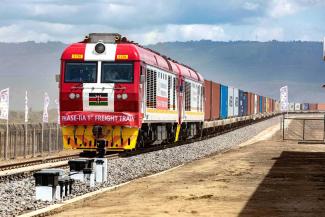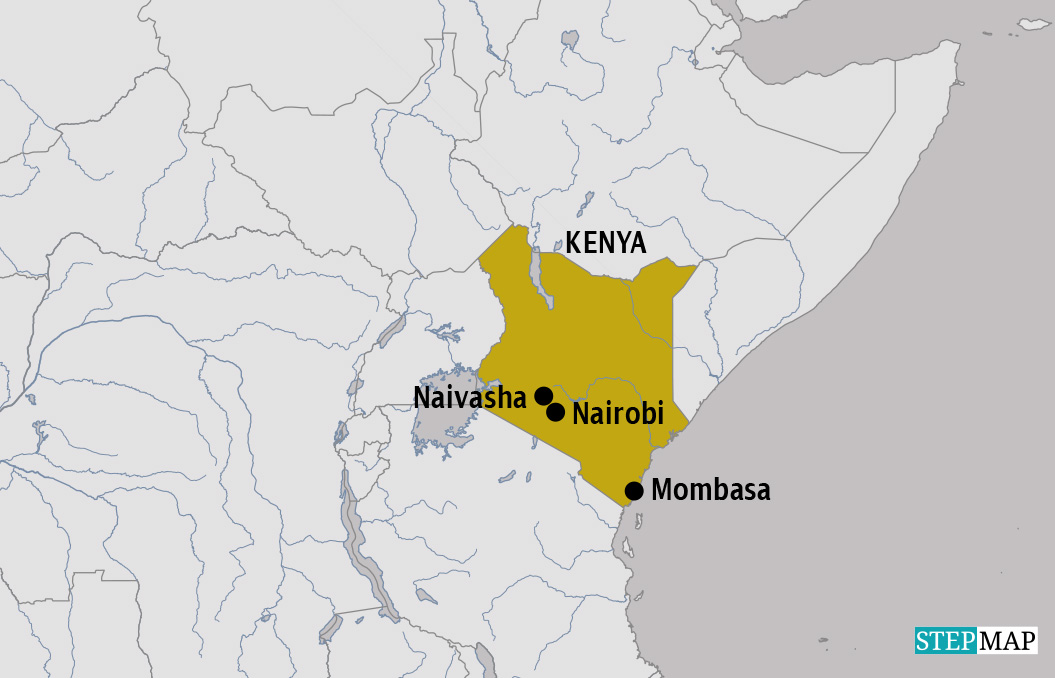East Africa
The key to Kenya’s industrial growth

Kenya’s garment industry is expected to drive the country’s manufacturing over the next decade. That is one message of a recent report published by Standard Chartered Bank. The authors argue that investors from Asia and the Middle East are driving growth in Kenya’s garment industry. In particular, they focus on export processing zones (EPZs), which the government has set up.
Kenya’s garment exports amounted to $ 420 million in 2020 even though the Covid-19 pandemic compounded supply-chain problems. The industry is currently employing 50,000 people in Kenya. The industry is labour-intensive and employs many women. In developmental terms, growth in this sector is very valuable because it can contribute to many families’ livelihoods.
According to Abel Kamau of the Kenya Association of Manufacturers (KAM), the potential is great. He reckons that “a fully developed value chain” in the garment industry might employ up to 10 % of the country’s population, given that both cotton farming and apparels manufacturing are very labour intensive. Kamau is in charge of textile industries at the KAM.
International competition is tough however. The Standard Chartered report states that China is not only the world’s “largest producer and exporter of both raw textiles and garments,” but also “investing in modern manufacturing machinery, technology and ‘greener’ products.” Clearly, the Chinese want to maintain their competitive edge. For Kenya to catch up, business leaders and policymakers must pay attention.
Infrastructure matters
Improving physical infrastructures is a core challenge. Kenyan manufacturers need more reliable electricity, better roads, continuous water supply et cetera. According to the national government, “road transport costs are four times the globally competitive rate”. That is a serious hurdle, constraining shipping times and limiting companies’ international competitiveness. It also means that supply-chains are unreliable. On the upside, things tend to be worse in most other African countries.
Financial services matter too. The different players of the apparel industry lack easy access to credit, according to Standard Chartered. High interest rates and complex regulations are cited as major problems. In particular, there is multiple taxation by different authorities at the county and national level.
In regard to skilled labour, the picture is mixed. In cooperation with the World Bank, Kenya’s government examined the textile and apparel sector. Their joint report states that the country has a skilled and educated workforce, but more needs to be done to develop its potential. One recommendation is more on-the-job training. The experts warn that it would be more expensive to run skills audits and design targeted programmes on that basis. They point out that wages in Kenya are high by African standards and that non-commodity industries must meet high quality requirements. In this setting, they appreciate Kenyan efforts to boost productivity by improving skills at managerial, technical and factory-floor levels.
Yet another concern is the supply and quality of cotton produced in Kenya. The industry must choose between buying cotton from local farmers and processing it to the quality needed for production, or importing fabrics of consistently better quality at higher costs. Corruption at ports and lax customs enforcement permit the infiltration of counterfeits as well as poor quality fabric.
To some extent, the international trade in second-hand clothes is a problem too. Discarded garments from high-income countries are imported to African markets, where they are sold to end consumers (see Thomas Fischer on www.dandc.eu). In particular people with low incomes buy these items, limiting the sales of domestic producers. However, the Institute of Economic Affairs in Kenya has studied the matter and found out that used imported clothing and locally-made clothing serve different customers and “do not necessarily compete with each other”.
What Kenya can do
For the industry to gain greater market shares abroad, business leaders and policymakers must rise to the challenges listed above. It can be done, argues KAM expert Kamau: “Kenya can borrow best practices from Bangladesh, a rising giant exporter of textiles and apparels.” (For employers’ perspective, see M.A. Jabbar on www.dandc.eu, and for workers’ perspective, Nazma Akter on www.dandc.eu.) In Kamau’s eyes, it is promising that Kenya “has been able to attract a substantial number of world buyers”.
The industry consensus is that Kenya has to be strategic. The first step is to attract more investors. Reasons to set up garments-manufacturing facilities in Kenya include the comparatively competent labour force and Nairobi’s role as an East African transport hub. Cargo flights are available, for example, and facilitate marketing logistics. By African standards, moreover, Kenyan rail and road links are excellent too. Transport from and to the port of Mombasa is comparatively easy.
Another positive aspect is that new investments can rely on energy-efficient technology. Lower energy costs are an important competitive advantage. A strong performance on this front, moreover, will help manufacturers get ecological certifications, enabling them to charge higher prices. In view of the climate crisis, the number of consumers who care about environmental issues is growing in global markets.
Useful trade agreements
Trade agreements are helpful too. Kenya belongs to the seven-country East African Community with a population of over 280 million people and the 21-member Common Market for East and Southern Africa with a market of about 600 million people. The Africa Continental Free Trade Area is expected to make it even easier to market Kenyan-make goods to consumers across the continent.
In February, moreover, Kenya and the EU agreed to negotiating an interim economic partnership agreement. According to the European Commission, it will give duty-free quota-free access to the EU market for all Kenyan exports, while Kenya must commit to the partial and gradual opening of its market.
As the Standard Chartered report noted, moreover, Kenyan exports benefit from duty-free access to the American market according to the African Growth and Opportunity Act (AGOA). This regulation will continue until 2025. It has contributed to facilitating industrial development in African countries.
Kenya’s government sees opportunities in specialisation and diversification, moreover. It wants to develop “Kenya’s image as Africa’s hub for innovation and green production”. The guiding idea is that companies should produce high-quality goods in order to benefit from the higher prices charged for small batches and eco-friendly ware.
To help firms improve quality, moreover, the government strategy includes public-sector procurement in Kenya. In other words, police uniforms and medical gowns for public health institutions will most likely be sourced domestically. School uniforms might matter too. “Analysis at the household level shows the majority of households buy new clothes when required such as school or workplace uniforms,” the Kenyan Institute of Economic Affairs has noted.
Alphonce Shiundu is a journalist and fact checker based in Nairobi.
shiunduonline@gmail.com










